Waxing skis at home is something pretty much every skier should do more often. Before I began waxing my own skis, I would only send mine off to get waxed about once a season. Learning to wax skis not only saves you a few dollars, it is actually pretty fun, relaxing, and almost has a zen quality to it. So, this is how to wax skis at home.
Step 1: Gather Materials
Before one can learn how to wax their skis, they first must get the correct gear to get the job done. First you will need a waxing iron. These irons are typically smaller, and about half the size of a standard clothing iron. Do not use your clothing iron, as the some wax will dry to your iron. You can find a standard waxing iron for about $30 online or at your local ski shop. Aside from your waxing iron you will need a wax scraper and wax. These are typically under $10 and can be found anywhere you can purchase an iron.
Finally, you will need wax for your skis. This is where things get a little more complicated. There are different types of wax available on the market. Waxes are rated by the temperature of snow in which you will be skiing on. You can apply a warm weather wax for those spring park laps and a colder wax for those harsh mid-season days. Temperature is important, but which brand to chose is pretty much personal preference. However, you can use a famous wax brand like Swix wax, but I would suggest supporting our friend Andy Parry's Wizardz Wax.
Step 2: Preparation
Now that you have all of the materials needed to wax your skis, you will need to set up a place to do it. This could be a work table in your garage or just a couple of saw horses on the lawn. Waxing skis is a messy process; I would highly recommend waxing outdoors, in a garage, or laying a tarp down in your home. Once you find your desired location, grab your skis and begin by binding your brakes. Holding back your ski brakes with a heavy rubber band or chord allow for an easier waxing process. After your bindings are ready, flip your skis over and lightly clean your bases with a brush. Make sure to warm up your iron, and set its temperature between 230 F - 285 F (110 C - 140 C) depending on your wax variation.
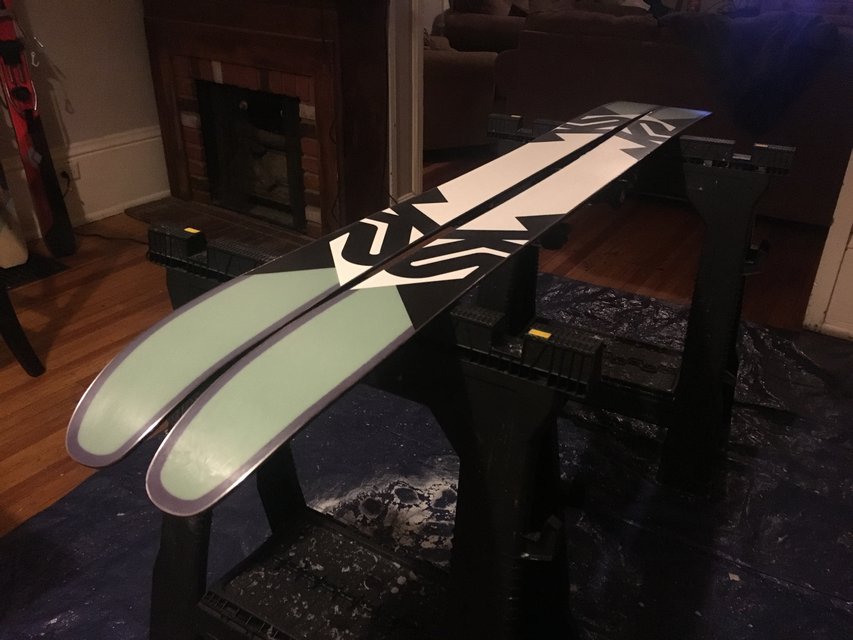
Notice how the brakes are held back, as if clicked in.
Step 3: Apply
Your skis and iron are ready to go. Grab your wax and apply it directly to the hot surface of the iron. The wax will begin to melt and drip off onto your skis. Evenly apply small drops of wax across your bases. You will likely need less wax then you think. Once you've applied the wax, your skis should be freckled with wax, see photo. Be careful, and watch your fingers, it is easy to burn them on the iron.
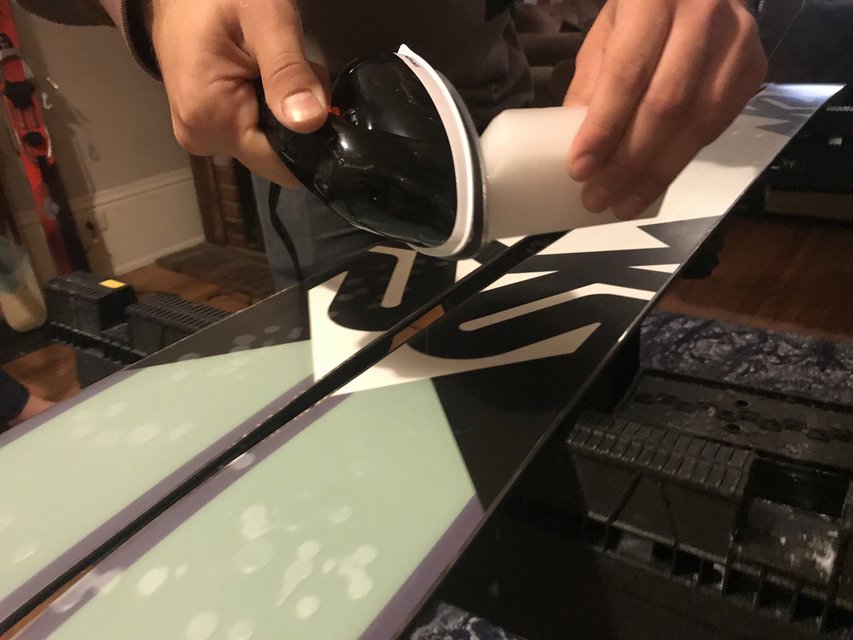
Step 4: Iron & Cool
The wax has been applied and is ready for the next step. Grab your iron and apply it directly to the base of your skis. The iron we remelt the wax. Start at the nose and begin to move the iron in circles down towards the tail; evenly spreading the wax across the entirety of the base. Make sure to keep moving, do not hold the iron in one place, as it may begin to melt the base material. Leave the skis to cool for about 5 to 10 minutes before moving onto the next and final step.
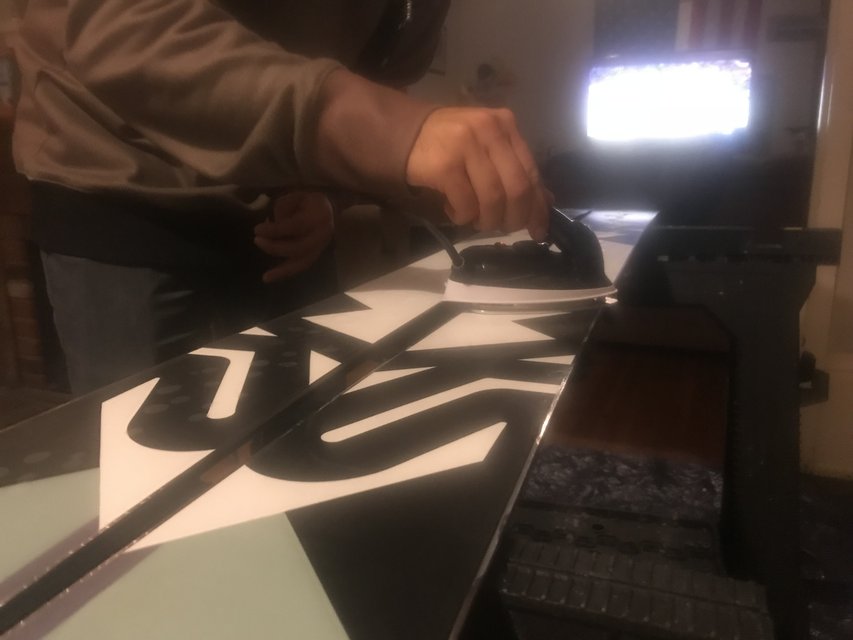
Step 5: Scrape
[/center]After letting the wax cool, grab your scrapper. This step is one of the most satisfying and messy parts of the waxing process. Grab your scrapper, starting at one end and working to the other. You might be wondering why one would scrape the wax off right after applying it. Yes, you will be scraping wax off the skis, however it will not be all of the wax. Using a strait edge scrapper makes the layer of wax the same thickness. If it is very dense in one spot, the scrapper will even it out, giving you a smoother ride below. Once you have scraped the wax evenly, remember to clean up the wax shavings on the floor or ground or your mom/girlfriend/landlord is going to be pissed.
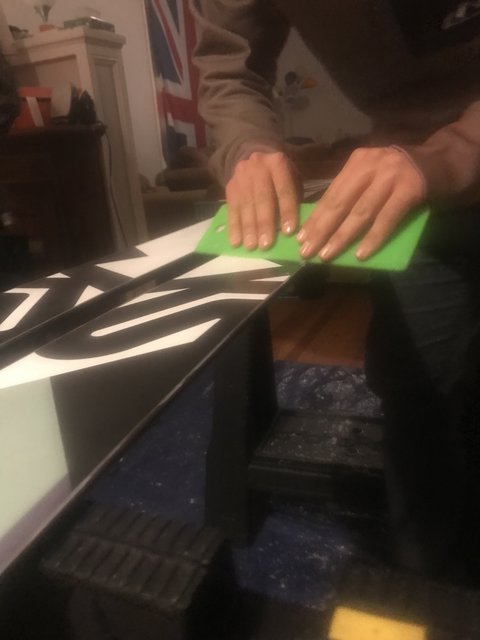
Now you are ready to shred with freshly waxed sticks. As with most things, you don't need to death grip or press as hard as you'd think. In fact you may break something or burn yourself. It is suggested that skiers wax their skis at least every 10 on snow days. I typically wax, as needed a few times a season, especially if conditions change. For more info, watch this incredibly detailed video.

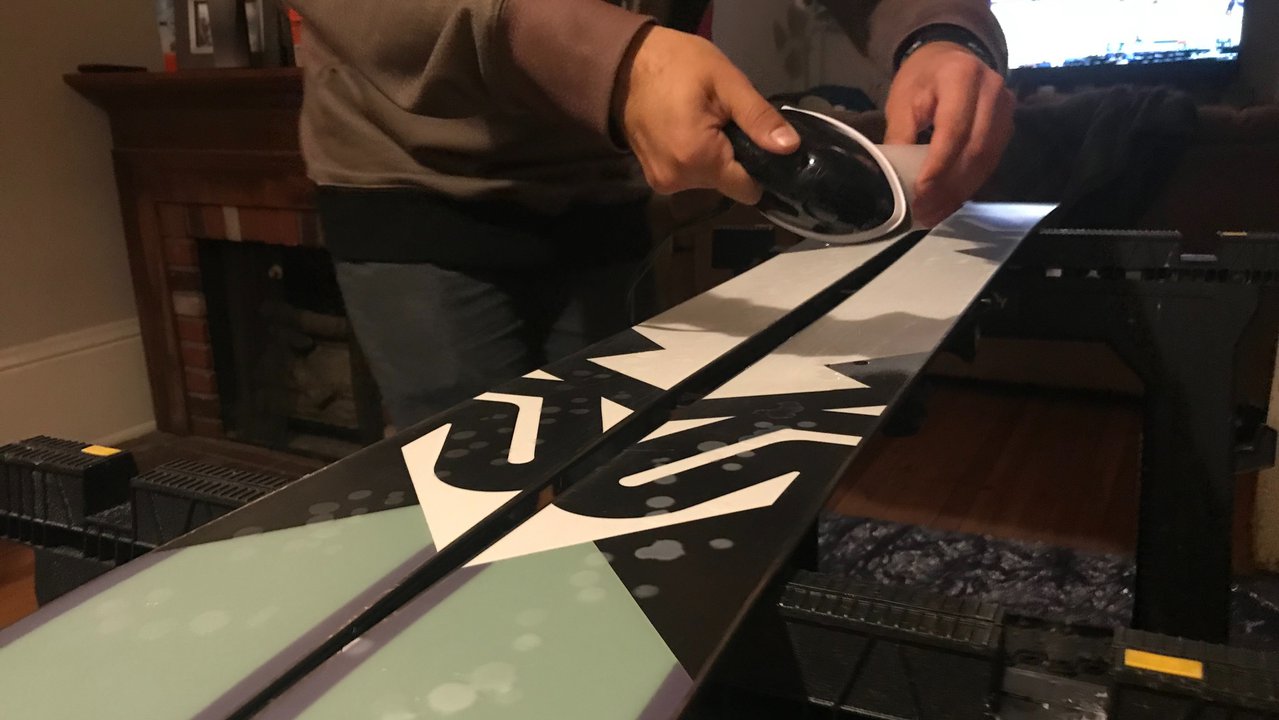
Comments